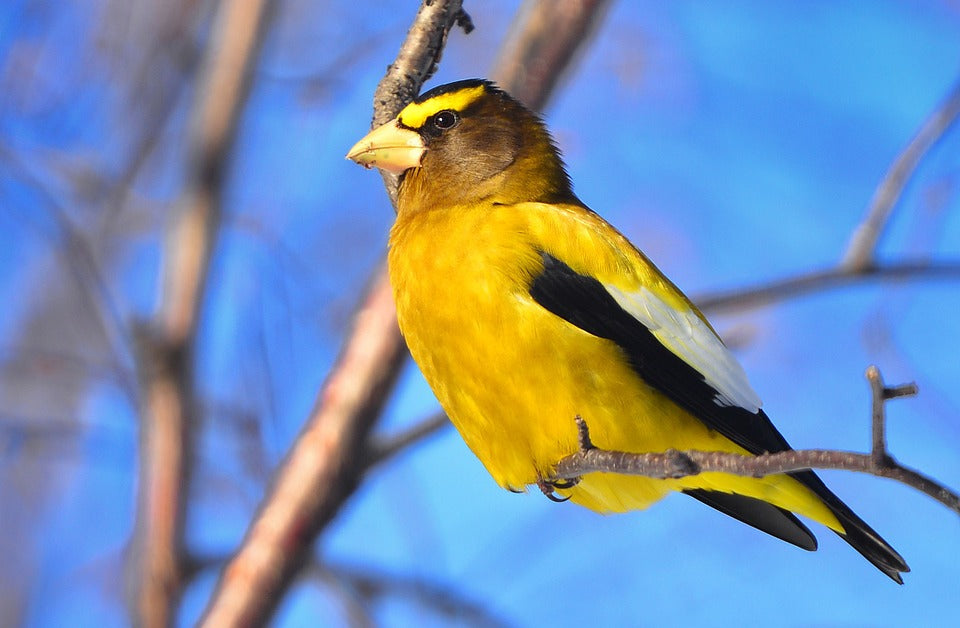Offer
Provide additional details about the offer you're running.
Provide additional details about the offer you're running.
Provide additional details about the offer you're running.

As we settle into the month of November and temperatures continue to decline into a more wintery range, we are beginning to see plenty of finch species around all of our feeders.
One such visitor we were more than happy to behold last week was a flock of evening grosbeaks.
Resembling a large goldfinch, these birds are unmistakably yellow, sport a distinct black eyebrow and have a thick bill characteristic of all birds in the finch family. As we sat and watched these beautiful birds, we couldn’t help but be transported to a time, not too long ago, that they were virtually non-existent.
Today, these birds are darn near to being the poster child of a proverbial comeback as their numbers continue to increase and sightings become more and more frequent at backyard feeders during the winter season. So, what happened to these birds and more importantly, what changed that helped fuel such a dramatic recovery?
Let’s break it down starting from the beginning.
History
Believe it or not, the evening grosbeak was originally a western bird, calling the Columbia River Basin its home during the mid-1800s were records indicate the species was quite abundant. As time progressed, the evening grosbeak was recorded in the east on a number of sporadic occasions toward 1900 but it wasn’t until roughly 1926 that confirmed breeding pairs began to pop up in New England and other areas along the eastern seaboard.
Fast forward to the 1970s and the evening grosbeak was in its heyday here in the east as population numbers spiked but eventually would sharply decline.
As citizen science programs began to pop up in the 1970s and 1980s, scientists and ornithologist not only grew concerned as the population levels began to drop towards the 1990s but they were puzzled as to the reason why.
The evening grosbeak populations then took a beating, between the years of 1968 and 2015, records indicate that the populations of these birds plummeted by as much as 97 percent.
Causes for Decline
As with any sharp decline in populations, the answer as to what causes declines is not always cut and dry. In many cases, there are a variety of factors that come into play and the story of the Evening Grosbeak is no different.
Habitat loss certainly contributed to their decline, as additional logging and development in Canada’s Boreal Forest spiked. Scientists also attributed losses to diseases such as salmonella, West Nile and House Finch eye disease.
Finally, it was determined that the aerial spraying of pesticides and other chemicals severely damaged the populations of spruce budworms and many other forest insects that these birds and many others depend on for food.
Together, we can rally against the use of harmful pesticides as well as encourage responsible logging and development projects across Canada’s Boreal Forest to help these and other species rebound and remain in strong numbers for generations to come.
High Quality Blend